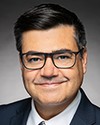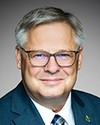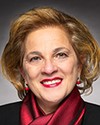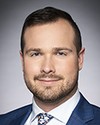Hi, everyone, and good morning. My name is Jason Hwang, and I'm here in my role as vice-president of salmon programs with the Pacific Salmon Foundation.
I'd like to thank the committee for inviting me to appear.
Before joining the Pacific Salmon Foundation four years ago, I spent 25 years working with DFO. From then until now, I've worked with and supported citizen scientists, and I have a deep respect and appreciation for the work they do.
Here's the main point I want to highlight for you today: Canada is missing out on huge, untapped potential to engage citizen scientists, especially in areas where there's a natural public interest in a subject. To explain this, let me turn to an example of Canada's engaging the capacity and talent of our communities, the sport of hockey.
Why is Canada so good at hockey? It's because we have the best players and the best coaches. Where do they come from? They come from our community hockey programs. Every hockey player in Canada was once a community hockey player and so was every coach. Hockey is more than just the players who play in the NHL; it's about the entire network of volunteers, amateurs and professionals who all play a part in making Canada the best of the best.
We can look at science in a similar way. We have professionals at universities and in government agencies, but we also have non-professionals in our communities who can be important parts of a broader network and system that can do more work, study more things and solve more problems than the professionals can on their own. Canada is a vast country, and professionals can't be everywhere doing everything, but we do have citizens out there who are well placed to do their part. Our hockey teams are great because of significant community engagement and support; we can do something similar when it comes to science.
How do we support and grow citizen science capacity in Canada?
First, we need a strategy and a system, not ad hoc ideas or funding that we throw out there and hope for something good. Second, we need to let people know how they can help. We need to give them a bit of guidance and direction. Third, we need their work to turn into something useful. Where does it go? How can it be used? Fourth, we need to show people that the work is important, valued and appreciated. We need to show up, see what they're doing and say thank you.
The federal government is generally not all that well placed to directly engage citizen scientists, but the federal government can use bridging organizations to help support more citizen science work. As an example, at the Pacific Salmon Foundation, we have a 35-year history of working with federal and provincial governments, first nations organizations and community groups. We have administrative, scientific and technical capacity that can help to connect federal funding and priorities to programs of high impact and high benefit to the community interests. For every dollar that's put into these projects, about $7 in value is created through the leveraged efforts of community volunteers.
Here's an example from our work of the kinds of things that can happen when we engage citizen scientists. We're partnering with the Dr. Francis Juanes lab at the University of Victoria on an adult salmon diet study, and here's how it works. When citizen science volunteer anglers catch a salmon, they send the salmon’s stomach to researchers at the university, where the contents are sorted and identified. The results give us a picture of what the salmon are feeding on throughout the seasons as well as the size and type of forage fish that are present in those locations.
Since sample collection is undertaken voluntarily from anglers located all over the area, the program has proven to be a cost-effective way to monitor and track changes in forage fish populations in the Salish Sea. From a research and conservation perspective, the results are relevant to a better understanding of forage fish stocks, which are essential food sources for our wild salmon. The program is also valuable because it engages the recreational fishing community and increases their understanding and enthusiasm for the science. It's a wonderful project, and it's providing data that is not available via typical science sources.
I'd like to leave you with a quote from Roméo LeBlanc in 1978 when he was the minister of Fisheries and Oceans. He was speaking about the new DFO salmon enhancement program. Here's what he said:
The Enhancement Program's real longterm success will be measured not so much by the miles of spawning channel as by the respect of generation after generation visiting these channels, and salmon streams, and rivers.... [T]he real investment of the Salmonid Enhancement Program is in—not for, but in—the people of British Columbia.
With this as inspiration, if we develop strategies and systems to support citizen science, we will be able to engage and activate enormous untapped capacity that exists across the country, and we will be able to do more work, study more things and solve more problems.
Thank you.




